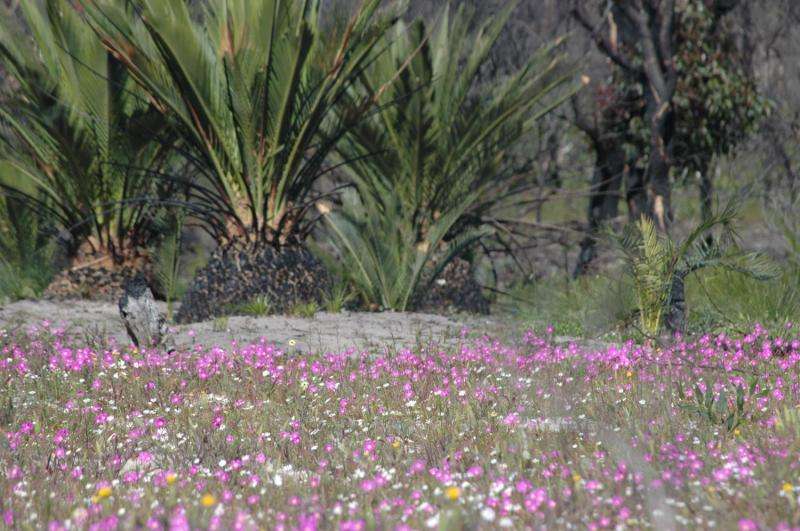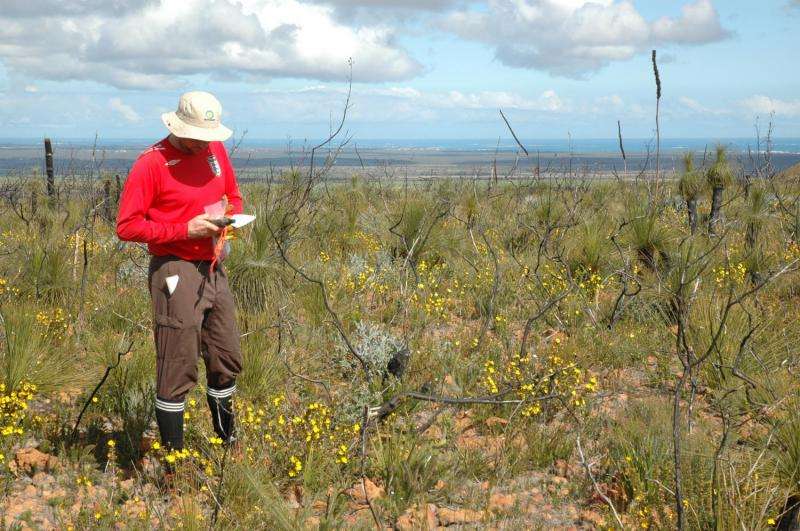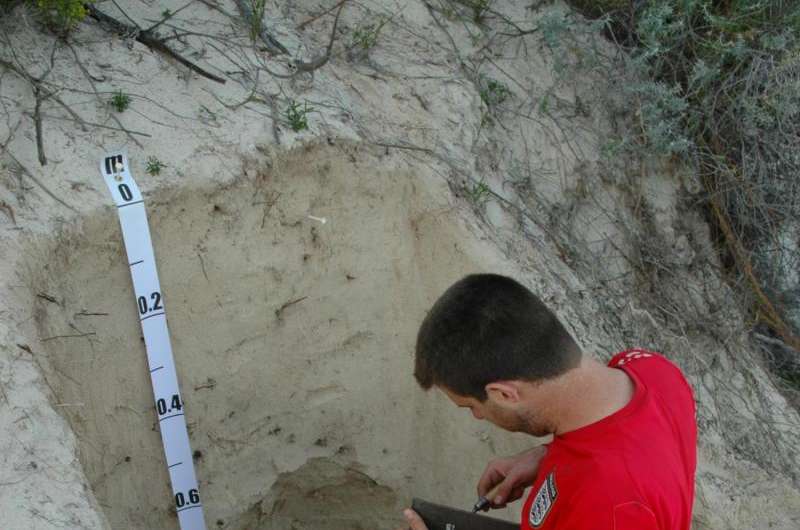Necessity at the roots of innovation: The scramble for nutrients intensifies as soils age

Confronted by extreme scarcity of nutrients in an Australian dune ecosystem, the leaves of different plant species converge on a single efficient strategy to conserve phosphorus, an essential nutrient. But it is a different story underground, say researchers, including Ben Turner, staff scientist at the Smithsonian Tropical Research Institute. Plants on older dunes draw from a full bag of tricks, and take advantage of nearly all of the known adaptations for acquiring nutrients to capture the phosphorus they need.
"Plants cope with phosphorus scarcity in a similar way above-ground by making phosphorus-efficient leaves," Turner said. "But below-ground they're using many different strategies to obtain phosphorus, and the diversity of those strategies increases as soil phosphorus declines."
The properties of soil, "the living skin of the Earth," drive biological processes, but these properties change as soils age. One of the best places in the world to study what happens to plant communities as soils age is the Jurien Bay dune chronosequence in Australia, a series of with new to ancient soils. New dunes form during interglacial periods of high sea levels, as the ocean throws sand up onto the shore. Meanwhile, inland dunes are gradually covered by kwongan, exceptionally species-rich shrubby vegetation unique to southwestern Australia. Soil phosphorus has gradually leached away during the past 2 million years, leaving some of the most impoverished soils in the world on the oldest dunes.
Turner and colleagues from the University of Western Australia and the University of Montreal identified and counted all of the plants at a series of six dune systems, then identified how each species acquired phosphorus from the soil. As the ecosystem aged, the number of plant species and the number of phosphorus acquisition strategies increased. Some plant roots join forces with mycorrhizal fungi, which extend out like a net from plant roots to capture nutrients. Other plants form clusters of roots that exude carboxylates to "mine" the soil for phosphorus. Some resort to parasitism and carnivory, extracting phosphorus from other organisms. Even plants growing next to one another used different nutrient capture strategies with equal success.

"There's considerable interest in understanding how plant traits influence the assembly of plant communities," Turner said. "This study highlights the potential importance of nutrient acquisition strategies in this process, particularly for species-rich ecosystems."
Complete results of this study, supported by the Australian Research Council and the Kwongan Foundation, are published in the journal Nature Plants.

More information: Zemunik, G., B.L. Turner, H. Lambers, and E. Laliberté (2015). Diversity of plant nutrient-acquisition strategies increases during long-term ecosystem development. Nature Plants. DOI: 10.1038/nplants.2015.50
Journal information: Nature Plants
Provided by Smithsonian Tropical Research Institute
















